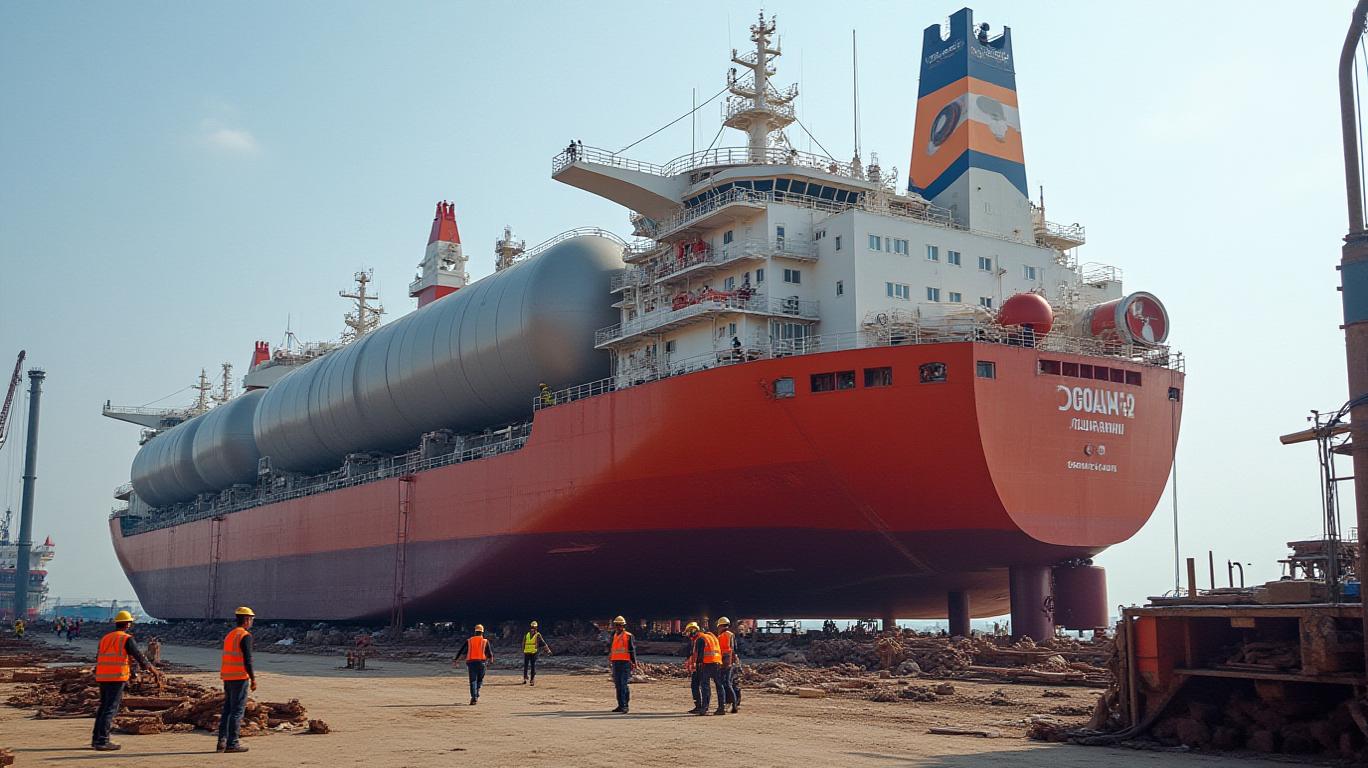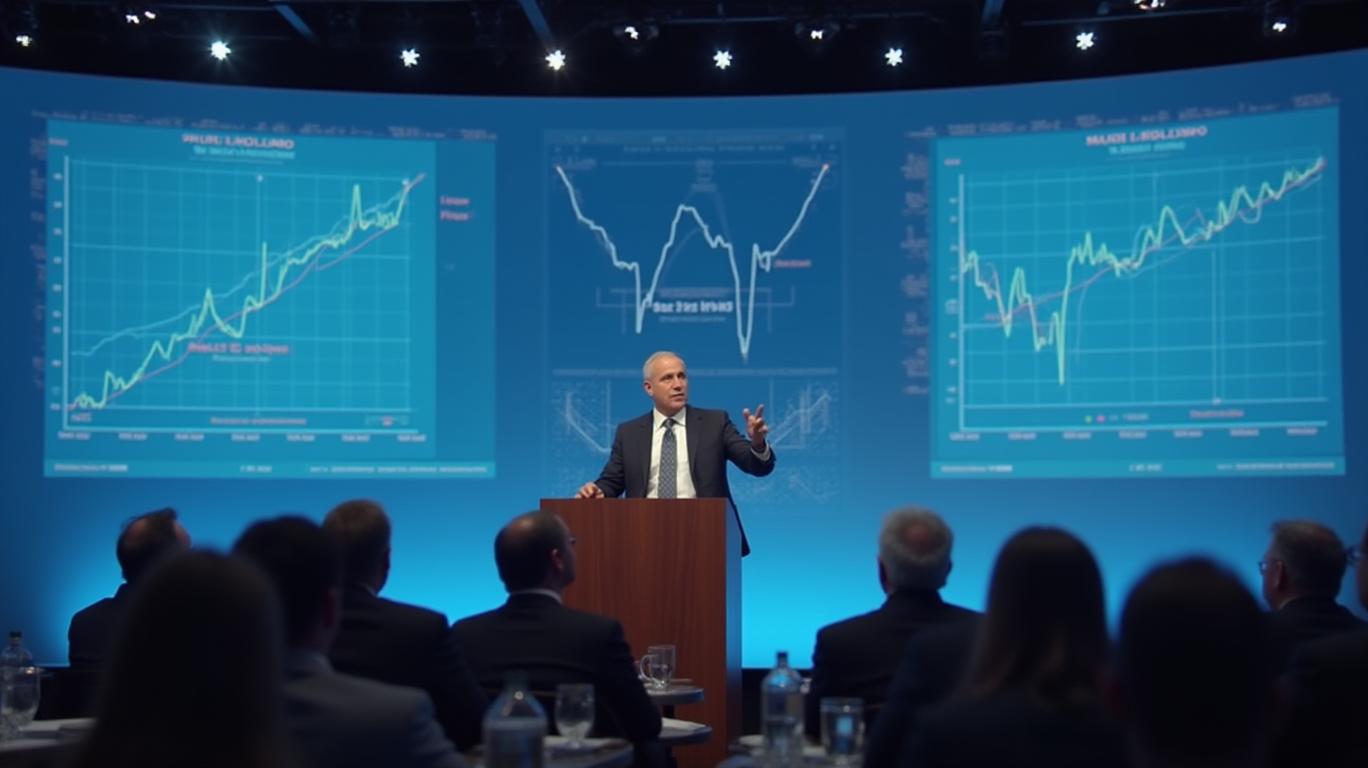Golar LNG Limited (GLNG): A Bull Case Theory
Wednesday, Feb 12, 2025 10:10 am ET

Golar LNG Limited (GLNG) has been a subject of debate among investors, with some seeing it as a promising opportunity and others remaining cautious. This article aims to present a bullish case for GLNG, focusing on key factors that contribute to the company's valuation and growth prospects.
Commodity-Linked Tariffs: A Key Driver of Valuation
One of the primary factors affecting GLNG's valuation is the commodity-linked tariffs on its contracts, particularly with PAE. Analysts have been focusing on a low-end commodity-linked contribution of 20% to the base tariff, which seems overly conservative given historical data from the company. In Golar's Q4 2023 results presentation, the company illustrated a mid-range scenario where commodity-linked tariffs contributed 100% of the base tariff, reflecting higher expectations. The tariff terms could potentially be negotiated downward, though there is a reasonable case to be made for Golar achieving a stronger outcome. This uncertainty has led analysts to adopt a cautious stance, but Golar's previous contract terms and the possible upside from commodity-linked contributions suggest the market is undervaluing its future prospects.
GLNG Gross Profit Margin, Cost of Goods Sold...
| Name |
|---|
| Date |
| Gross Profit Margin% |
| Cost of Goods Sold(USD) |
| Revenue By Business |
| Net Income(USD) |
| Golar LNGGLNG |
| 20240930 |
| 52.06 |
| 32.61M |
| 8.85M |
| -35.97M |
Future LNG Prices: A Wildcard for Growth
Golar's valuation is highly sensitive to future LNG prices, with analysts projecting a range of $8-10/MMBtu. Current LNG prices exceed this range, sitting around $14/MMBtu, but there are expectations that prices will fall with the arrival of new supply. The most likely scenario seems to be a mid-range price of $8-10/MMBtu, with risks evenly balanced between upside and downside. However, with LNG prices currently higher than projected, Golar stands to benefit from this short-term advantage while it waits for the longer-term supply balance to shift.
Securing Contracts for MkII Newbuilds: A Catalyst for Growth
Securing a contract for GLNG's MkII newbuilds is crucial for the company's growth prospects. Golar had previously expected a deal with Nigeria, but this may have been delayed or fallen through. However, the company has signaled that it expects to have a unit contracted within 2025, with the main contender now being YPF, a partner in the joint venture with PAE leasing the Hilli unit. The prospect of securing a contract with YPF is becoming more promising, as YPF recognizes Golar's ability to provide floating liquefaction units (FLNGs) sooner and at a lower cost than competitors. The possibility of a contract with YPF within the year, along with the option to secure a second MkII vessel, could significantly enhance Golar's growth prospects.

Strong Position in the FLNG Market: A Competitive Advantage
Golar LNG has a strong position in the FLNG market, with a fleet of 13 vessels and a track record of successful projects. This position allows the company to capitalize on the growing demand for FLNG services and secure favorable contracts with clients. The company's ability to provide FLNGs sooner and at a lower cost than competitors, as recognized by YPF, further strengthens its competitive advantage.
In conclusion, the bullish case for Golar LNG Limited (GLNG) is supported by several key factors, including the potential upside from commodity-linked tariffs, the company's strong position in the FLNG market, and the prospect of securing contracts for its MkII newbuilds. While there are uncertainties surrounding the company's future business, the market's cautious stance may present an opportunity for investors to capitalize on the company's growth prospects. As always, it is essential to conduct thorough research and consider your risk tolerance before making any investment decisions.


_442a2dcc1749832873286.jpeg)
_e68fac6d1749831664430.jpeg)





